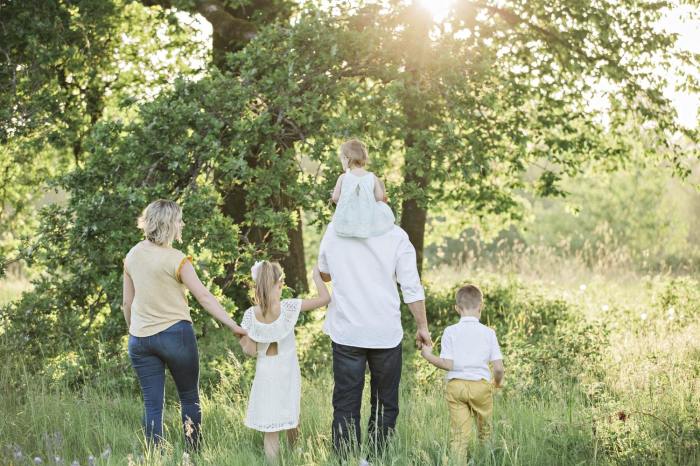Share of children living in 2-parent homes reaches highest level in nearly 30 years: report

The percentage of children living in a two-parent household has hit its highest point in nearly 30 years, according to a report by the Institute for Family Studies.
In an analysis of 2020 United States Census data, the conservative think tank released a report earlier this month titled “Growing Up With Mom and Dad: New Data Confirm The Tide Is Turning.”
According to 2020 data, 70.4% of people under 18 live in a home with two parents, while 25.5% live with one parent and 4.1% live with neither parent.
The finding on children living in two-parent homes is a slight increase from the 69.4% reported in 2010 and 69.1% reported in 2000. However, it remains slightly below the 72.5% recorded in 1990 and well below the 87.7% from 1960.
The report also drew from 2012 and 2020 data from the U.S. Department of Education's National Household Education Survey, which likewise shows increases in the presence of two-parent households for high school seniors.
This data suggests that from 2012 to 2019, the percentage of white high school seniors living in two-parent homes went from 55.8% to 59.1%, while the share of black high school seniors living in two-parent homes went from 24.3% to 29.6%.
Nicholas Zill, research psychologist and a senior fellow at IFS, wrote in the report that “although certainly not out of intensive care, the supposed corpse of the two-parent family seems to be breathing new life.”
“All the experts agreed: the nuclear family was on its way out. The two-parent family of married mother and father bringing up their own biological children would soon be replaced by a menagerie of alternate family forms,” wrote Zill.
“And for more than a half-century, each year’s tabulation from the Census Bureau on children’s living arrangements seemed to be proving the experts right.”
In comments emailed to The Christian Post on Tuesday, Zill explained that he found the increase in two-parent homes for children to be a “somewhat surprising” result.
He attributed the slight turnaround to multiple factors, among them marriages happening “at older ages and education levels,” a “decline in teen childbirth” and a “greater awareness of benefits of two-parent upbringing.”
In his analysis, Zill states that before "celebrating the turning of the tide," it's important to note that "the standard Census Bureau family trend charts underestimate how grave the condition of the two-parent family has been and still is."
"The Bureau lumps stepparent and adoptive families with both birth-parent families, making their two-parent category more inclusive than commonly understood," Zill wrote. "Furthermore, children in stepfamilies and adoptive families have experienced family disruption. The evidence is that they have higher rates of emotional, behavior, and learning problems than those residing with both birth parents."
Despite the recent uptick, the Census Bureau warned in April that the percentage of children living only with their mothers has doubled since 1968.
In 1968, 85% of children under 18 lived with two parents. About 11% of children lived with their mothers only in 1968. By comparison, 21% of children in 2020 were reported to live with their mothers only.
The number of children living with their fathers only has quadrupled from about 1% in 1968 to 4.5% in 2020.
Last November, IFS released a report based on the Census Bureau’s American Community Survey, which found that in 2019, the U.S. had its lowest divorce rate since 1970.
In 2019, according to the report, for every 1,000 marriages, 14.9 ended in divorce. The figure is lower than it was in 1970, which had a rate of 15 divorces per 1,000 marriages.
The 2019 numbers on divorce were also considerably lower than the data from 1980 when the National Vital Statistics had reported a divorce rate of 22.6 divorces per 1,000 marriages.
IFS Director of Research Dr. Wendy Wang, the author of the 2020 report, told CP at the time that while the divorce rate has been declining since the 1980s, the “rate has been falling much faster in the past decade.”
“People are getting married later in life these days, and they are less likely to rush into a marriage which they may regret later on. On the other hand, we've seen the record low marriage rate happening in the U.S.,” explained Wang in 2020.
“College-educated adults are more likely than those without a college degree to get married, and their divorce rate is lower.”




























